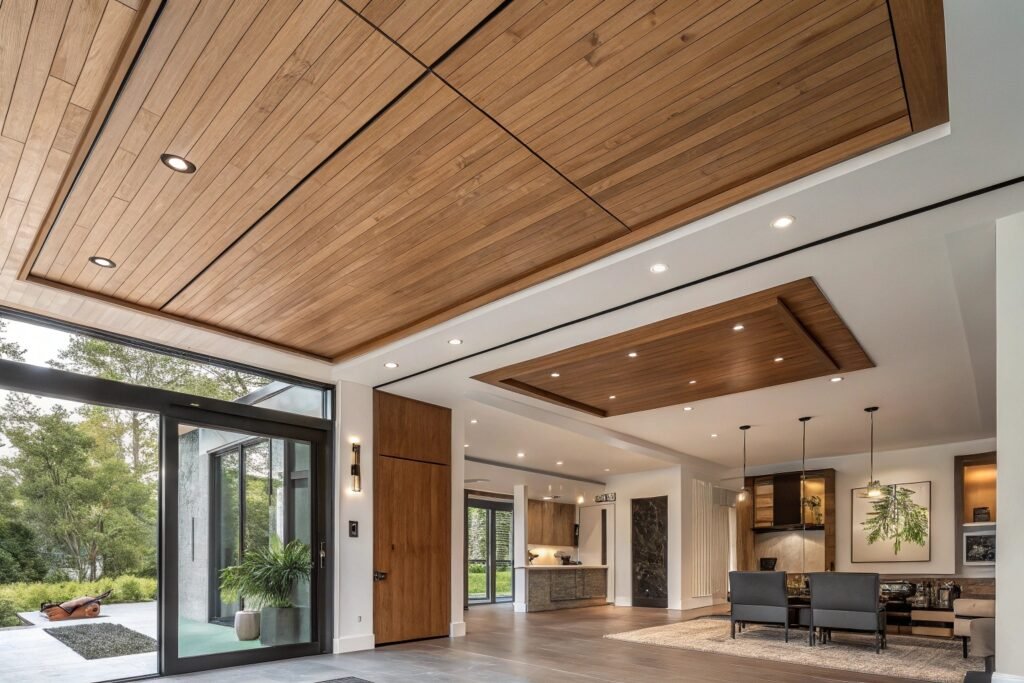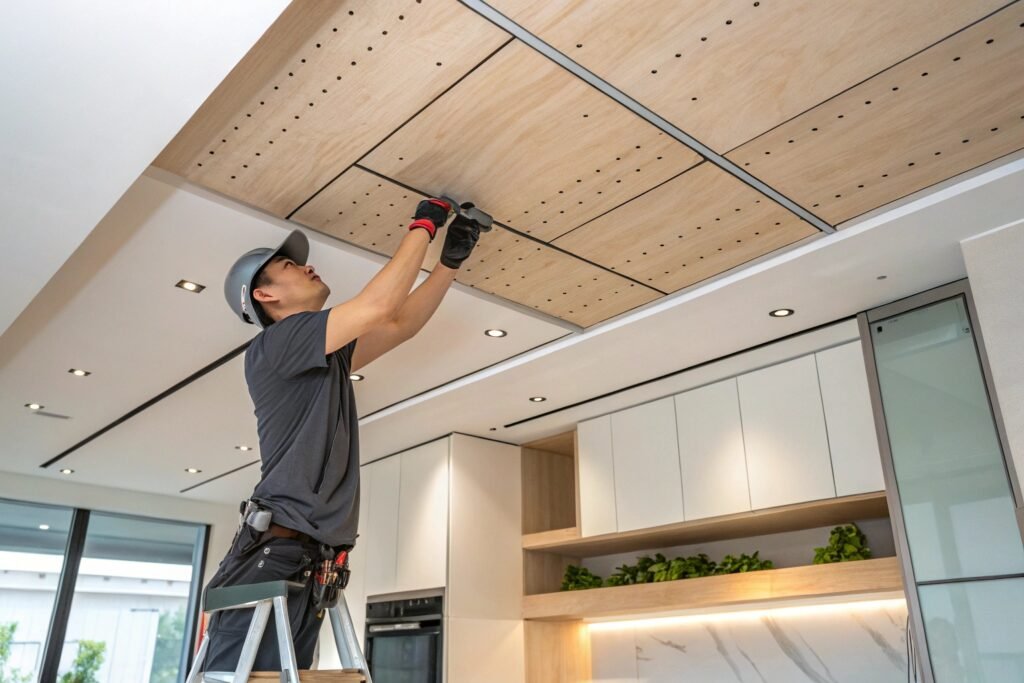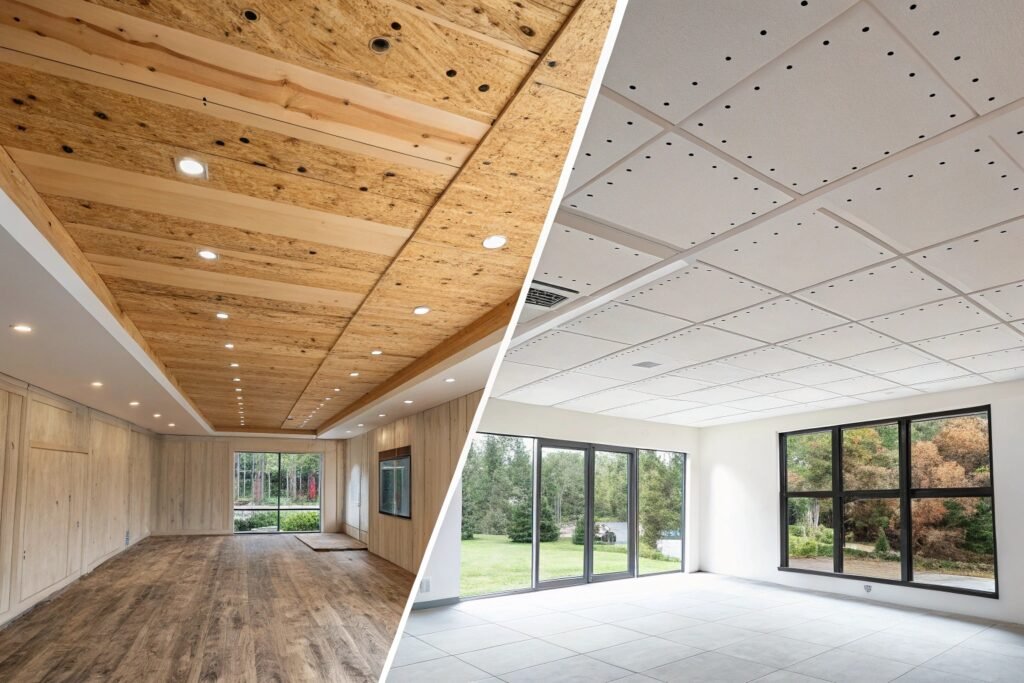Plywood is commonly used for floors and walls, but have you considered it for your ceiling? Whether you’re renovating or designing a new space, plywood can be an excellent choice for your ceiling. Let’s explore why.
Plywood offers a range of benefits for ceiling applications, from being lightweight and easy to install to providing custom aesthetic options.

Having used plywood for ceiling installations in both residential and commercial projects, I can confirm its advantages. Here’s why plywood might be the perfect solution for your ceiling.
What are 5 advantages of plywood?
Here are five key advantages of using plywood for your ceiling:
Lightweight: Plywood is lighter than many alternatives, making it easier to handle and install. This reduces the complexity of ceiling installation.
Versatile Aesthetic: Plywood comes in various finishes and types, allowing you to achieve a range of looks—whether you want a natural wood finish or a more modern, painted surface.
Durability: When properly installed, plywood can be very durable. It’s resistant to cracking, warping, or sagging, making it a long-lasting option for ceilings.
Fire Resistance: Many types of plywood are fire-resistant, which adds an extra layer of safety for your home.
Easy to Maintain: Plywood ceilings are easy to clean and maintain. A quick dusting or light wipe-down keeps the surface looking fresh.
Is plywood ok for a ceiling?
Yes, plywood is perfectly suitable for ceilings. It has several characteristics that make it a strong, durable choice.

The main reason plywood works well for ceilings is its stability—it won’t expand or contract significantly with changes in humidity. This means you can install it in areas with varying moisture levels, like bathrooms or kitchens, without worrying about deformation.
Additionally, plywood is relatively easy to install. You can use standard fasteners to attach the panels to your ceiling joists, and the material is lightweight enough to avoid putting undue strain on the structure.
Is plywood or drywall better for a ceiling?

Choosing between plywood and drywall depends on the look, durability, and installation time you’re going for.
Plywood is more durable and can give your ceiling a unique, natural look. It’s also more resistant to impacts and moisture, making it a good option for high-traffic areas or places prone to humidity.
Drywall, on the other hand, is easier and quicker to install. It’s generally cheaper but can be prone to damage like cracking or sagging, especially in humid areas.
Overall, if you’re looking for a natural, custom aesthetic or need something that can handle moisture, plywood is the better choice. If speed and cost are your main concerns, drywall may be more suited to your needs.
Is a plywood ceiling expensive?
The cost of a plywood ceiling depends on several factors:
Grade of Plywood: Higher-quality plywood (such as hardwood plywood) will be more expensive, while standard softwood plywood tends to be more affordable.
Design: Custom finishes, like staining or varnishing, can increase costs.
Size of the Project: Larger ceiling areas will require more materials, making the overall cost higher.
However, when compared to drywall, plywood is often a more cost-effective option for ceiling installations, especially when you consider its durability and the aesthetic value it provides.
Conclusion
Plywood is a versatile and durable option for ceilings, offering benefits like lightweight installation, fire resistance, and the ability to customize your ceiling’s look. Whether you’re looking for a natural wood finish or something that resists moisture, plywood provides an excellent alternative to traditional drywall. With its long lifespan and low maintenance, it’s a smart investment for any ceiling project.
